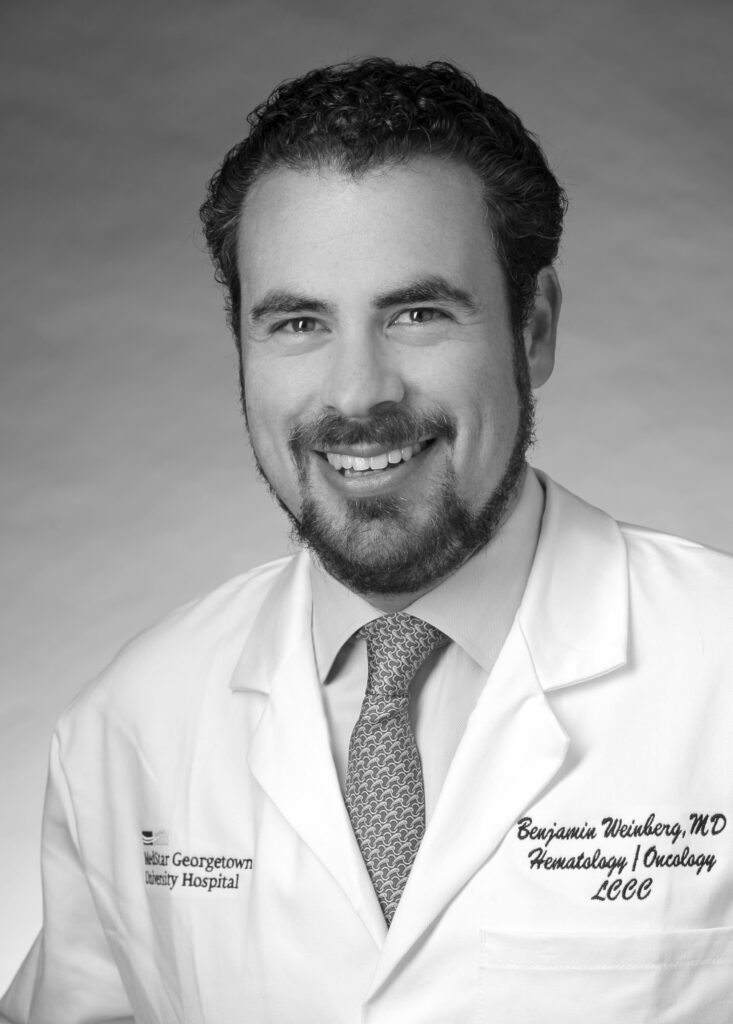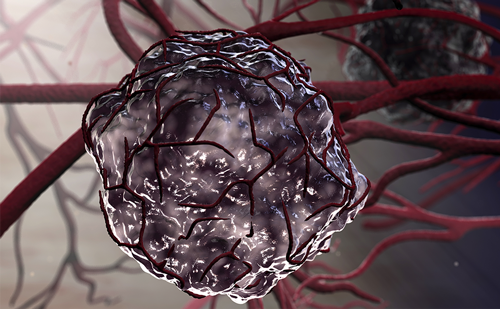Implanting Tumors with Permanent Radiation Sources
Brachytherapy refers to the procedure of physically placing radiation sources into, next to, or through malignant tumors. Its history dates back to the very discovery of radiation, and since then has become established as a successful treatment in many organs. The most common uses today involve the prostate, uterine, cervix, and head and neck malignancies.The key principles of brachytherapy involve delivery of tumorcidal doses of radiation to the malignant tumor, but due to rapid radiation dose fall-off, minimal adjacent normal tissues are damaged. Currently, a few specialized centers can place radiation sources manually into the liver percutaneously or via open laparotomy. A more easily and broadly applied technique is to use 90Y microspheres, which utilise the unique vascular anatomy of the liver to preferentially implant hepatic tumors. It has long been established that the liver arterial system supplies 80–100% of the blood to liver tumors (primary and metastatic); however, the normal liver derives nearly all of its blood flow from a parallel portal venous system. In addition, metastatic tumors in particular form up to 200 times more vessels in plexi around tumors compared with the normal liver tissues immediately nearby. This combination of vascular structure and local tumor feeding vessel concentration has led to the discovery that 90Y microspheres released in the hepatic artery will preferentially accumulate the periphery of tumors in at least a 3:1 to 20:1 ratio compared with a normal liver.The therapeutic index is therefore favorable, as it is in other brachytherapy approaches, i.e. the prostate. The diameter of the microspheres enables them to become implanted in the tumor, but they are too large to pass through the end arterioles in the capillary bed, which have a restrictive diameter of only 8–10µmHg. Only if arterial-venous fistulas in the tumor are present with diameters of more than 30µmHg would microspheres pass into the next capillary bed, which is the lung.The active radiation source (yttrium) is a pure beta emitter, with energy deposition and dose-rate close to that of external beam therapy (EBT), yet the effective range is only 3mm from the sphere.Patient Evaluation, Selection, and Treatment Procedure
The treatment of liver tumors should be carried out by multidisciplinary oncology teams that have proven expertise in treating patients with liver-related illnesses and the resultant inherent complications and side effects that treatment can produce. Special therapeutic interventions are often required to enable safe approaches to multiple liver tumors. Microsphere liver brachytherapy programs do not require capital expenditures as they utilize the existing personnel, skills, equipment, and physical infrastructure already in place. The radioactive spheres are contained in a small acrylic holder that provides radiation protection, and is typically handled in the hot lab of the nuclear medicine or radiation oncology departments. New containment facilities are therefore not needed for acceptance, storage, or disposal of the radiotherapy system. Most patients will be referred from a medical oncologist to the brachytherapy team for evaluation. Of diagnostic imaging techniques, computed tomography (CT) and, as appropriate, fluorodeoxyglucose-positron emitted tomography (FDG-PET), scanning are standard but magnetic resonance imaging (MRI) or OctreoScan® are also used for complementary information in some tumor types.
The liver vasculature is meticulously mapped by contrast injection in the hepatic arteries during the angiogram by an interventional radiologist, paying special attention to any vessels that could carry microspheres away from the liver and into the stomach, duodenum, or gallbladder. At the conclusion of the hepatic angiogram a simulation of the actual treatment is performed with albumin particles that approximate the size of microspheres, tagged with technetium-99m (99mTc)—a gamma source that is easily and routinely imaged by nuclear medicine gamma cameras.The test is called macro-aggregated albumin (MAA) and is used in a variety of other clinical situations; it is therefore well established and validated in nuclear medicine. It will also reveal the relative amount of microspheres that were able to bypass the hepatic tumor capillary bed that allowed them to implant in the pulmonary vasculature instead. The nuclear medicine team acquires axial single photon emission computed tomography (SPECT) and planar anterior-posterior (AP)-posterior-anterior (PA) gamma scans after the MAA injection to calculate the percentage of activity released into the liver that actually accumulated in the lung.The amount of activity injected into the liver is known, and the ratio of uptake in the lungs compared with the total (lungs and liver) represents the shunt fraction of particles. If this exceeds 15%, then a significant dose reduction is used or the 90Y microsphere treatment aborted to avoid potentially serious pulmonary fibrosis from radiation.
Fortunately, excluding a patient from microsphere treatment due to a large shunt is uncommon—less than 10% in US patients.The delivery of microspheres occurs on a separate day, typically a week later, and uses all the data acquired from the angiogram, MAA, and radiation treatment planning to safely deliver 90Y microspheres to the affected lobes of the liver, or whole liver as needed. Immediately after treatment an additional gamma scan is obtained in both planar and SPECT to confirm the location of the majority of microspheres. Characteristic X-rays are emitted during beta decay of 90Y that can be captured and imaged. Patients are seen in follow-up every few weeks and liver function tests are obtained frequently to monitor for radiation or tumor-related complications and/or dysfunction.
Historical Results of 90Y-Microsphere Treatment
Prior to 2002, the majority of patients with colorectal metastases were treated by microspheres as a stand- alone therapy, as salvage after the hepatic tumors had become refractory to chemotherapy, or had recurred after local treatments of cryotherapy, radiofrequency ablation (RFA), and/or transarterial chemo- embolization. A resin microsphere developed in Australia was used predominately in colorectal liver metastases, but also primary liver cancer (hepato- cellular). In North America, a glass microsphere, also using 90Y as the therapeutic moiety, was used in hepatocellular cancer until 2000, when it was reintroduced to the US medical system to treat all types of solid tumors in the liver.1 However, it was only partially approved by the US Food and Drug Administration (FDA), requiring a treatment protocol and Institutional Review Board (IRB) oversight due to its classification for use under a humanitarian device exemption, which is still in place.While many centers gained experience with microsphere therapy, encouraging results (salvage therapy) were reported for both types of microspheres in a variety of metastatic and primary liver tumors. Resin microspheres were granted ful FDA approval in 2002 for the treatment of colorectal cancer metastases given concurrently with hepatic artery floxur- idine chemotherapy.
In 2003, resin microspheres were given a CE mark, with initial treatments occurring in early 2004 in several EU countries. The glass microsphere is not available outside of North America. The key early clinical results in the largest patient cohort (colorectal cancer metastases) have come from Australia and the US. Clinical trials in colorectal cancer have been conducted in Australia in chemotherapy-naïve patients, and in the US in salvage patients.The pivotal trial accepted by the FDA for resin microspheres was interesting but is currently clinically applicable to most patients. Gray2 randomized 74 patients with liver-only colon cancer metastases to a hepatic artery infusion of floxuridine versus floxuridine plus one treatment of resin microspheres, termed selective internal radiation therapy (SIRT). The partial and complete response rate by CT and carcinoembryonic antigen (CEA) was improved for patients receiving SIRT.The median time to disease progression in the liver was significantly longer for patients receiving SIRT in comparison with patients receiving hepatic artery chemoembolization (HAC) alone. The one-, two-, three-, and five-year survival for patients receiving SIRT was 72%, 39%, 17%, and 3.5%, compared with 68%, 29%, 6.5%, and 0% for HAC alone. Cox regression analysis suggested an improvement in survival for patients treated with SIR-Spheres® who survive more than 15 months (p=0.06). There was no increase in grade 3–4 treatment related toxicity for patients receiving SIRT in comparison with patients receiving HAC alone.
Resin microspheres in the US are used in patients with chemorefractory liver metastases but minimal extrahepatic disease is treated with one, two, and sometimes three courses of SIRT without concurrent chemotherapy. The largest experience with either glass microspheres or resin was presented recently with 329 patients in the US treated with microspheres alone.3 The abstract was updated from 243 patients to 329 patients at presentation (201 resin and 128 glass) with the median survival of both resin and glass microsphere patients (actuarial) of 11 months versus a similar cohort of patients without microsphere treatment of five months (p=0.001). All patients were followed until alternate therapy was given, at which point they were censured in the analysis or, if there was no other therapy, until death.
Acute and late toxicities were reported based on common toxicity criteria (CTC) of 2.0, with all gastrointestinal (GI)-related side effects added together for a total of 30% grade 3 (nausea, emesis, anorexia, and abdominal pain, gastric, or duodenal ulceration). No cases of veno-occlusive disease or procedure-related mortality occurred.Three cases of radiation-induced liver dysfunction were found, with chronic ascites and low albumin, with CT scan evidence of hepatic fibrosis. Objective response rates were encouraging with CT scan (35%), PET (90%), and CEA (70%) achieving a maximal response at three months post-treatment.3
90Y-Microsphere Treatment Matures
The majority of solid tumors receiving radiation will undergo enhanced apoptosis and tumor killing with concurrent chemotherapy to produce at least additive, but usually synergistic, cell killing. Cancers of the colon and rectum are the prototypical chemoradiotherapy tumor type, and most common metastatic lesions in the liver in Europe and North America. Combining the newest and the most effective chemotherapy agents for colorectal cancer with microspheres is the next logical step now that the effectiveness and safety have been established in microsphere-alone treated patients.Two important phase I studies have recently been reported in patients with liver metastases from colon cancer.Van Hazel4 treated newly diagnosed patients with 5-fluorouracil, folinic acid and oxaliplatin (FOLFOX4) and one application of microspheres during the first week of chemotherapy. The dose escalation involved oxaliplatin, which was found to be well-tolerated at full dose (85mg/m2) for that regimen with microspheres. Response Evaluation Criteria in Solid Tumors (RECIST) by CT scan was significant in 10 of 11 evaluable patients.Van Hazel5 also tested chemotherapy and microspheres in 23 patients that had failed treatment with fluorouracil (5FU), but were irinotecan, naïve. Dose escalation of irinotecan was not yet complete at the time of the report, but the desired dose of 100mg/m2 concurrent with microspheres was well tolerated in all patients treated to date. Interestingly, the median time to liver progression was 6.3 months, and median survival was 12 months (two to 25+ months).
Phase I/II clinical trials combining chemotherapy, biologics and resin microspheres are on-going in Europe and the US for colorectal cancer liver disease. Additional experience with resin spheres is also being gained for metastatic breast, neuroendocrine, and hepatocellular cancers in Europe, the US, and Asia. By the end of 2005, additional advances will be published regarding radiation dosimetry, fractionation (more than one application of microspheres) imaging, and follow-up guidelines, and long-term results in colon, breast, neuroendocrine, hepatocellular, and many other solid tumors. It is a therapeutic approach that has shown promise, safety, and flexibility in its application to many tumor types, in patients with both early and advanced hepatic disease, even when patients have a heavy pre-treatment profile. ■












